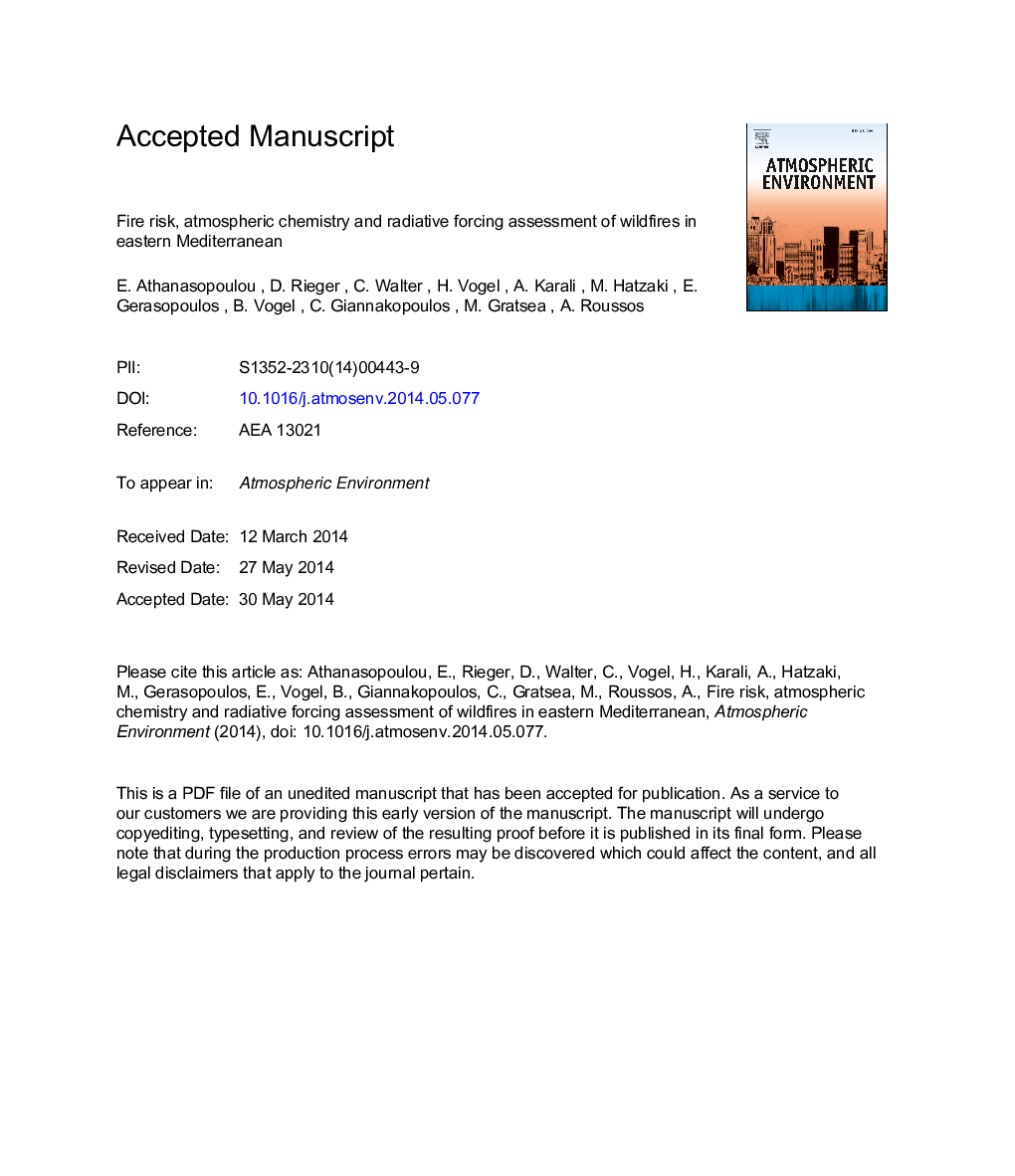| Article ID | Journal | Published Year | Pages | File Type |
|---|---|---|---|---|
| 6339163 | Atmospheric Environment | 2014 | 43 Pages |
Abstract
The current research study aims at investigating the atmospheric implications of a major fire event in the Mediterranean area. For this purpose, a regional aerosol model coupled online with meteorology (COSMO-ART) is applied over Greece during late summer 2007. Fire risk model results proved to be adequate in reproducing the highly destructive event, which supports further applications for national meteorological forecasts and early warning systems for fire prevention. Columnar aerosol loading field predictions are consistent with satellite maps, which further allows for the correlation of this wildfire event to the atmospheric chemistry and the radiative forcing. Gaseous chemistry resembles that in urban environments and led to nitrogen dioxide and ozone exceedances in several cities in proximity to and downwind the fire spots, respectively. Influence in Athens is found significant from the Euboean plume (45% of total surface PM10) and small (5%) from the fires in Peloponnese. Fire events are indicated by sharp increases in organic to elemental carbon (6), together with sharp decreases in secondary to total organic components (0.1), in comparison to their values during the pre- and post-fire period over Athens (1 and 0.6, respectively). The change in the radiative budget induced by the fire plume is found negative (3-day-average value up to â10 W mâ2). Direct heat input is found negligible, thus the net temperature effect is also negative over land (â0.5 K). Nevertheless, positive temperature changes are found overseas (hourly value up to +2 K), due to the amplified radiation absorption by aged soot, coupled to the intense stabilization of the atmosphere above the sea surface.
Related Topics
Physical Sciences and Engineering
Earth and Planetary Sciences
Atmospheric Science
Authors
E. Athanasopoulou, D. Rieger, C. Walter, H. Vogel, A. Karali, M. Hatzaki, E. Gerasopoulos, B. Vogel, C. Giannakopoulos, M. Gratsea, A. Roussos,
